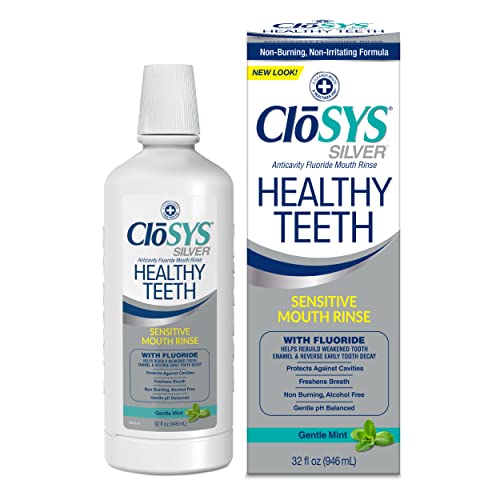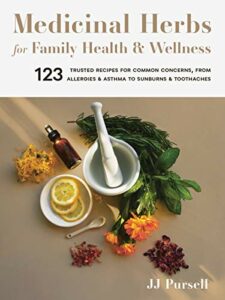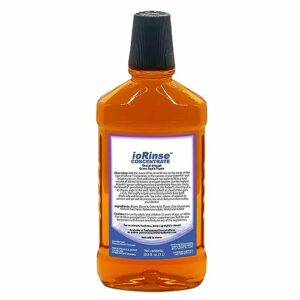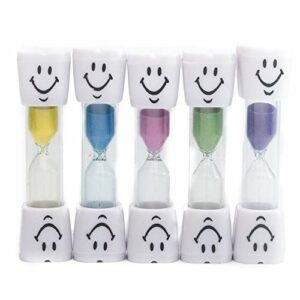In our step-by-step guide “Can mouthwash help prevent tooth decay?”, we aim to provide you with a clear understanding of how to properly use mouthwash and its potential benefits in preventing tooth decay. We understand that maintaining good oral health is important to you, and we want to support you in your journey. This guide will walk you through the steps of using mouthwash effectively, helping you make the most out of this oral care routine.
Enhance your oral hygiene routine
Understanding tooth decay
Tooth decay is a common dental problem that occurs when the enamel on our teeth is damaged by acid produced by bacteria in our mouth. This acid is formed when the bacteria feed on the sugars and carbohydrates present in our food and drinks. Over time, the acid wears away the enamel, leading to the formation of cavities or holes in the teeth. To prevent tooth decay, it is important to maintain good oral hygiene by brushing twice a day, flossing daily, and visiting the dentist regularly for check-ups and cleanings.
Choosing the right mouthwash
To provide information on different types of mouthwash and their ingredients that can help prevent tooth decay, we will discuss two common types of mouthwash: fluoride mouthwash and antibacterial mouthwash.
Fluoride mouthwash contains fluoride, which helps to strengthen tooth enamel and prevent tooth decay. It is particularly beneficial for those who are at a higher risk of developing cavities. For example, Listerine Total Care Anticavity Mouthwash contains fluoride and is designed to protect against cavities, reduce plaque, and freshen breath.
Antibacterial mouthwash contains ingredients that kill bacteria in the mouth, helping to prevent gum disease and bad breath. One example is Colgate Total Advanced Pro-Shield Mouthwash, which contains cetylpyridinium chloride, an antibacterial agent that fights germs for 12 hours and provides a fresh feeling throughout the day.
To choose the right mouthwash for preventing tooth decay, look for the presence of fluoride in the ingredients if you are concerned about cavities. If you are more focused on preventing gum disease and bad breath, opt for an antibacterial mouthwash.
Reading the label
To read and understand the labels on mouthwash bottles and ensure their effectiveness in preventing tooth decay, follow these simple instructions:
- Check the active ingredients: Look for key ingredients like fluoride or antibacterial agents, which help in fighting tooth decay and plaque. Make sure the mouthwash contains the necessary active ingredients for optimal oral health.
- Note the recommended usage: Pay attention to the instructions for use and follow them carefully. The label will specify the recommended amount of mouthwash to use and how long to rinse your mouth. Adhering to these instructions will ensure maximum effectiveness.
- Look for ADA Seal of Acceptance: The American Dental Association (ADA) evaluates dental products for safety and effectiveness. Look for the ADA Seal of Acceptance on the label, indicating that the mouthwash has met their standards.
By following these instructions and understanding the labels on mouthwash bottles, you can make informed choices and select a mouthwash that will effectively prevent tooth decay and promote good oral health.
Proper brushing and flossing
Maintaining a good oral hygiene routine is essential in preventing tooth decay. Alongside regular brushing and flossing, incorporating the use of mouthwash can provide additional protection. To ensure effective oral care, we recommend brushing your teeth twice a day for two minutes each time, using a fluoride toothpaste. After brushing, don’t forget to floss between your teeth and along the gumline. Finally, rinse your mouth with mouthwash for 30 seconds, making sure to swish it around all areas of your mouth. This comprehensive approach will help keep your teeth and gums healthy, reducing the risk of tooth decay.
Using mouthwash correctly
To use mouthwash effectively for preventing tooth decay, follow these step-by-step instructions:
- Pour 20-30ml of mouthwash into a cup or directly into your mouth.
- Example: “Pour 20ml of mouthwash into a cup.”
- Swish the mouthwash around in your mouth for 30-60 seconds.
- Example: “Swish the mouthwash around in your mouth, making sure to reach all areas, for 30-60 seconds.”
- Spit out the mouthwash into the sink.
- Example: “Spit out the mouthwash into the sink, ensuring you remove all of it from your mouth.”
- Refrain from eating or drinking for at least 30 minutes after using mouthwash.
- Example: “Avoid eating or drinking anything for at least 30 minutes after using mouthwash to allow the active ingredients to work effectively.”
Using mouthwash correctly can be an important part of your oral hygiene routine and help prevent tooth decay. Remember to read and follow the instructions provided by the mouthwash manufacturer for best results.
Frequency of use
To achieve the best results in preventing tooth decay, it is recommended to use mouthwash at least twice a day. Here are some tips to help you incorporate mouthwash into your oral hygiene routine:
- After brushing your teeth: Rinse your mouth with mouthwash immediately after brushing your teeth. This helps to reach areas that may have been missed during brushing and ensures thorough cleaning.
- Between meals: If you consume acidic or sugary foods and beverages throughout the day, it is advisable to use mouthwash after meals. This helps to neutralize the acids and remove any food particles that may linger in your mouth.
- Before bedtime: Using mouthwash before going to bed is particularly important, as it helps to kill bacteria that can cause tooth decay and bad breath overnight.
Remember, it is crucial to follow the instructions provided on the mouthwash bottle for the recommended duration of rinsing. Generally, you should swish the mouthwash around your mouth for about 30 seconds to one minute before spitting it out. It is also important to avoid eating or drinking for at least 30 minutes after using mouthwash to allow its ingredients to work effectively.
By incorporating mouthwash into your oral hygiene routine at least twice a day, you can enhance your efforts in preventing tooth decay and maintaining good oral health.
Avoiding common mistakes
To address common mistakes people make while using mouthwash, it’s important to take note of a few things. Firstly, avoid using mouthwash immediately after brushing your teeth, as this can wash away the fluoride from your toothpaste. Instead, rinse with water and wait for about 30 minutes before using mouthwash. Additionally, remember to dilute the mouthwash if it’s too strong for you. Follow the instructions on the bottle and mix it with water as recommended. Lastly, be mindful not to swallow the mouthwash, as it contains ingredients that are not meant to be ingested. Spit it out after swishing it around your mouth for the recommended time.
Combining mouthwash with other preventive measures
To further prevent tooth decay, we recommend incorporating these additional preventive measures in conjunction with using mouthwash:
- Brush your teeth at least twice a day with fluoride toothpaste. Use gentle, circular motions to thoroughly clean all tooth surfaces, paying special attention to the gumline.
- Floss daily to remove plaque and food particles from between your teeth and along the gumline. Be gentle and careful to avoid injuring your gums.
- Limit your consumption of sugary and acidic foods and drinks. These can contribute to tooth decay by weakening the enamel and promoting bacterial growth.
- Visit your dentist regularly for professional cleanings and check-ups. They can identify any dental issues early on and provide appropriate treatment or advice.
By following these additional preventive measures alongside using mouthwash, you can enhance your oral hygiene routine and reduce the risk of tooth decay.
Monitoring progress
To monitor the effectiveness of mouthwash in preventing tooth decay, follow these steps:
- Observe and track: Use a dental mirror to check for any visible signs of tooth decay, such as cavities or discoloration. Keep a record of any changes you notice.
- Note any improvements or worsening: Pay attention to any changes in tooth sensitivity or pain levels, as well as the overall condition of your teeth and gums. If you see improvements, it might indicate that the mouthwash is working effectively. Conversely, if you notice any worsening symptoms, it’s crucial to seek professional dental advice.
- Compare with professional evaluation: Regularly schedule dental check-ups and discuss your use of mouthwash with your dentist. They can provide a professional assessment of your oral health and determine if the mouthwash is effective for you.
- Seek professional advice if necessary: If you have any concerns or doubts about the effectiveness of the mouthwash in preventing tooth decay, don’t hesitate to consult your dentist. They can provide personalized advice and suggest alternative products or treatments if needed.
Remember, monitoring the effectiveness of mouthwash in preventing tooth decay is an essential step in maintaining good oral hygiene.
Maintaining overall oral health
To emphasize the importance of maintaining a healthy lifestyle for optimal oral health, we recommend practicing good oral hygiene habits such as brushing your teeth twice a day, flossing daily, and using mouthwash. In addition, it is crucial to schedule regular dental check-ups at least twice a year. These check-ups will allow your dentist to detect any early signs of dental problems and provide necessary treatment. For example, brushing your teeth with fluoride toothpaste and using a soft-bristle toothbrush can help prevent tooth decay and gum disease. Regular dental check-ups can also help identify and address any issues with teeth alignment or bite problems, which can lead to more serious oral health concerns if left untreated.
Understanding the limitations and considerations
In conclusion, we have explored the question of whether mouthwash can help prevent tooth decay. Through our guide, we have discovered that while mouthwash can be a beneficial addition to our oral hygiene routine, it should not be seen as a standalone solution. Regular brushing and flossing remain the cornerstones of preventing tooth decay. However, mouthwash can provide an extra layer of protection by reaching areas that may be missed by brushing alone. It can help to reduce plaque, freshen breath, and promote a healthier oral environment. Nevertheless, it is essential to choose a mouthwash containing fluoride and to follow the manufacturer’s instructions for optimal results. Ultimately, maintaining proper oral hygiene practices, including regular dental check-ups, will play a crucial role in preventing tooth decay and ensuring our long-term oral health.

















